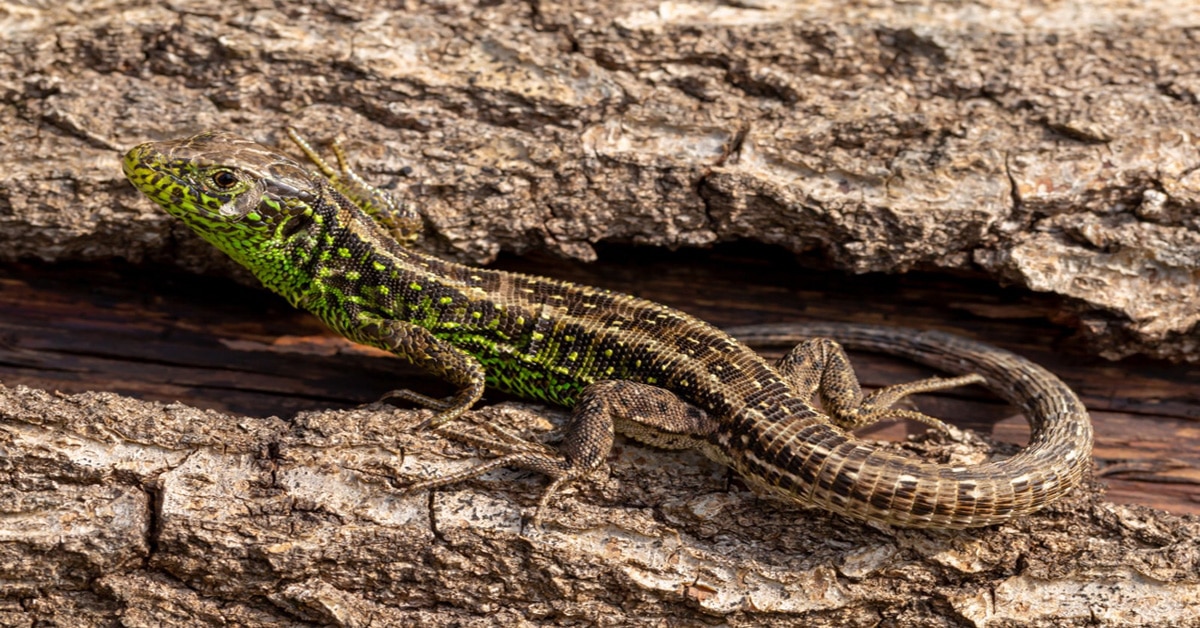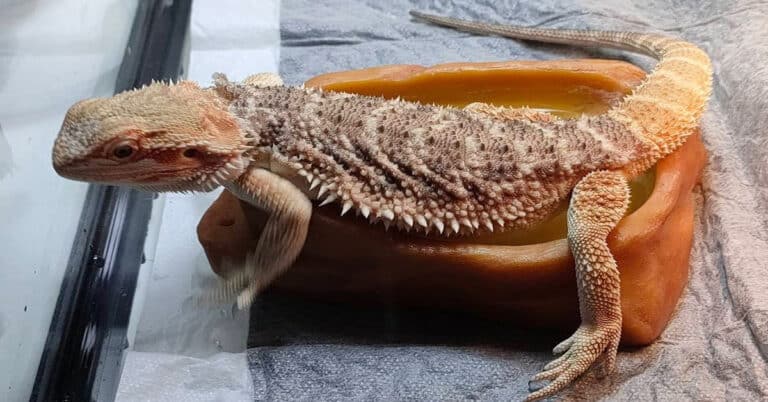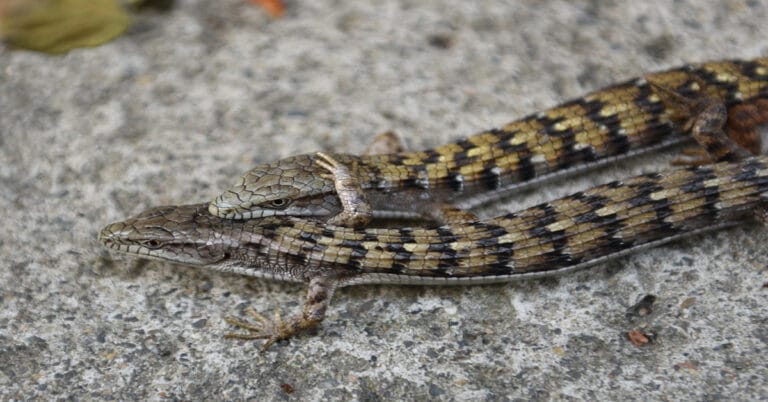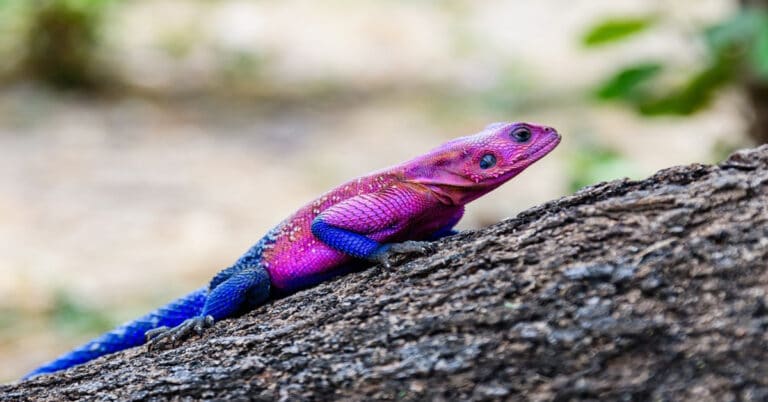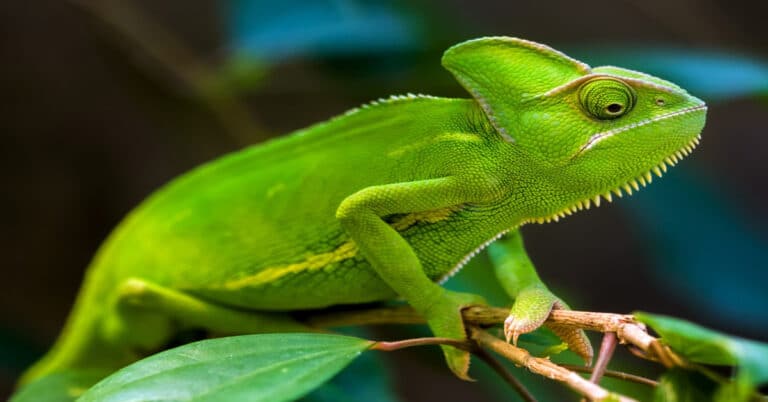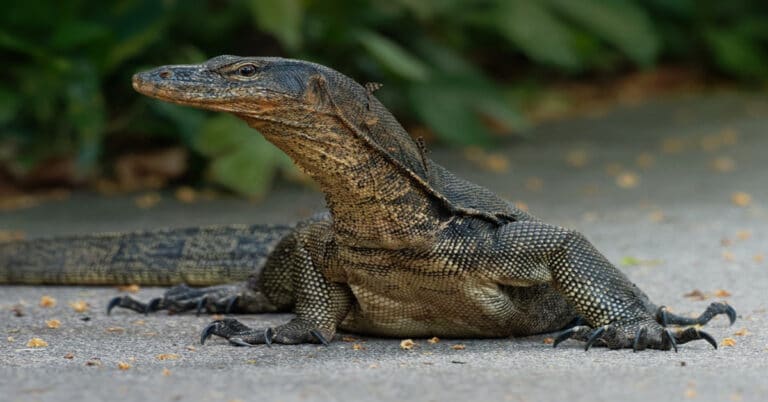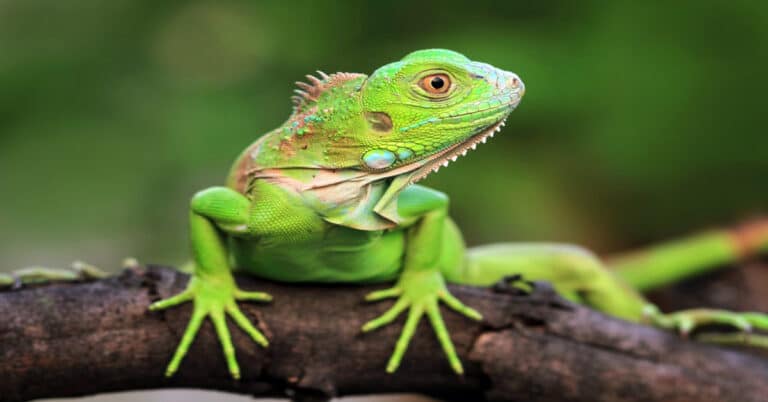Sand Lizard
Scientific Classification
| Kingdom: | Animalia |
| Phylum: | Chordata |
| Class: | Reptilia |
| Order: | Squamata |
| Family: | Lacertidae |
| Tribe: | Lacertini |
| Genus: | Lacerta |
| Species: | L. agilis |
| Binomial name: | Lacerta agilis |
One of the rarest reptiles in the UK is the Sand Lizard Lacerta agilis. They take pleasure in dwelling in sandbanks and moorlands. You can observe them basking on exposed areas of sand, they often lay their eggs in the sand. The ruination of their habitat has led to a decrease in their number and therefore, you can find them only in limited sites. Among the three native species of Lizards of the UK, the sand lizard is one, the other two being the common lizard and the slow worm lizard that has taken shelter in Britain (and most of Europe).
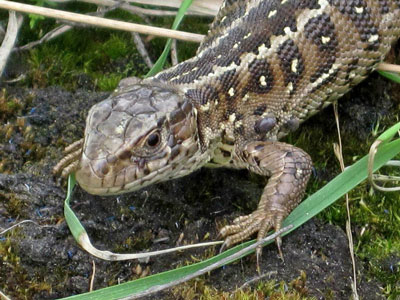
Anatomy
The lizard Lacerta is a comparatively small, yet sturdy variety of lizards, generally pale brown in color. Along the back, it has dark markings. The male sand lizards are famous for their noteworthy color change, from pale brown to bright green at the period of mating to entice the female for mating.
There are many minor species, of which the westernmost is Lacerta Agilis Agilis is one, the other being the main western minor species (L. a. Argus), The stripes on the back are either narrow and broken or totally absent. This is true of the L. a. Argus variety that in addition, has a brown or red backed phase in the absence of marks on their backs. During the copulation period in these two varieties, the tails of only these males change into green color, whereas in the eastern minor varieties (mainly L. a. Exigua), the color of the males is totally green, all the time.
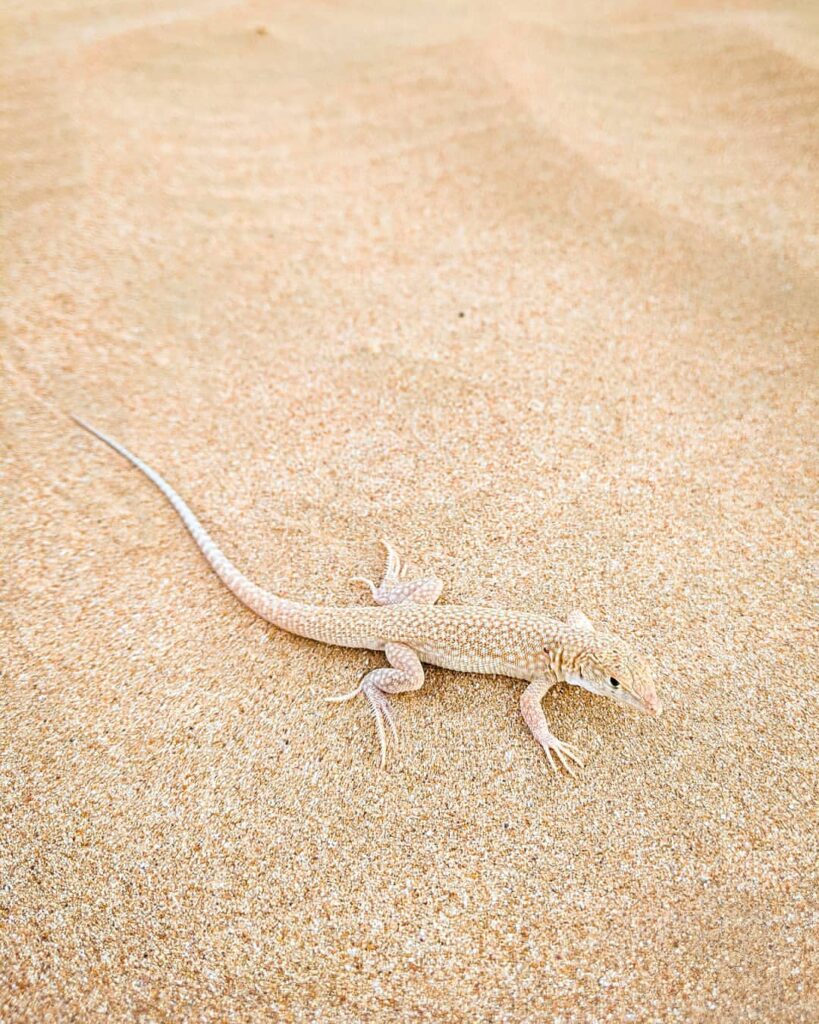
Behavior
The Mongolian Lacerta, called Sand Lizard, is on the verge of extinction. On the other hand, you can obtain Sand Lizards reared in captivity in the market, and they make good pets! During the winter season, from November to April, Sand lizards confine themselves in insulated cracks, burrows or under some kind of protective core, logs or gathered heap. Usually they dwell in colonies, in places with sand heaps. They construct burrows, and being generally introvert, slight disturbances will cause them to run to their burrows. To control the temperature within, they will add vegetation to the entrance of the burrows. They even occupy the burrows made by other animals. Low grown grasses are where sand lizards like to bask. Breeding competition begins and the bigger male lizard, with more endurance is normally the winner that mates with the female. The process of competition is like this: males keep their mouths open and arch their backs, followed by dashing against each other and wrestling till one of them surrenders. Certain people are of the opinion that Sand Lizards are monogamous. Still others are of the opinion that during breeding season they copulate with two or three different females.
Habitat
The Sand lizard (Lacert Agilis) spreads throughout Europe and towards the east to MongoliaYou cannot see it in European Turkey or Iberian Peninsula. They are generally spread irregularly, limited to certain sandy heaths like Dorset, Surrey and Hampshire. They dwell in the heaps of sand in Lancashire. Wales and South East are the other places where you can see them
The Sand lizard dwells along the sand dunes in the coastal area in heath-land and grasslands. The native place of these lizards ranges from Mongolia, along the eastern part of Europe and United Kingdom. In spite of ample native land at its disposal, the population of sand lizards is scarce and at some places they their population has dwindled drastically.
As a Pet
Breeding
Mating of the Sand lizard takes place in the beginning of the summer months when the males display their latest green design, thus impressing their female counterparts. The female lays her eggs in the sand and it is not the mother but the sun that incubates the eggs. With regard to the other species of lizards, the parents hardly take any care of the baby sand lizards who take care of themselves on their own at infancy.
Other than the native sand lizards, no other lizard lays eggs (oviparous). During the months of June and July the females dig holes and place their eggs in the loose sand. They hatch in about 1 to 2 months based on the condition of the weather.
Housing
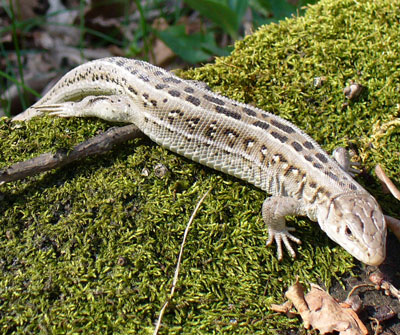
Indoors:
Place a couple in an enclosure of size 50 cm x 30 cm x 30 cm, use sand for substrate, and retain a portion of the substrate damp and a dry portion as deep as 10-15 cm. The wet sand enables the females to burrow and lay eggs and helps further to raise the relative humidity in the terrarium. Bear in mind that males are defensive, hence place only a single male in an enclosure.
In order to give provision for climbing and shielding, place in the terrarium leaves, pieces of clay pots, pieces of bark and short branches.
In order to convince yourself that your lizards drink water, place a bowl of water and also mist the terrarium twice a day.
Create an excellent basking spot by providing a spotlight and a UV-B lighting of temperature ranging from 25 – 27 degrees C during the day and up to 35 degrees C on the spot where they bask. At day, maintain the photo period to a duration of 12 – 14 hours in summer. And drop the temperature during the night from 14 to 18 degrees C.
Outdoors
A terrarium of size 3m x 4 m houses two couples of this variety. Furnish your terrarium that imitates their natural habitat by planting various plants. Besides, facilitate them with flat stones, slabs or rocks for them to bask on and also logs or solid roots and hiding spots. You can obtain varieties of natural food by attracting insects through flowering plants placed in the terrarium. In order to convince yourself that your animals are fed stomach full, off and on, give them some crickets. Provide the terrarium and your Sand Lizards with a shower of water to drink once daily.
Food
The Sand Lizards take in earthworms, more or less any variety of insects and at times, flowers and sweet fruits. Dust all the food except that from the enclosure outdoors, with calcium and vitamin supplements.

Having discovered a fondness for insects while pursuing her degree in Biology, Randi Jones was quite bugged to know that people usually dismissed these little creatures as “creepy-crawlies”.

